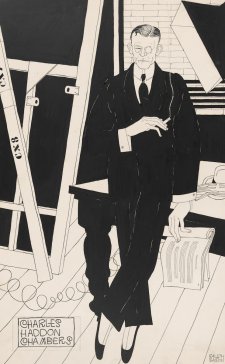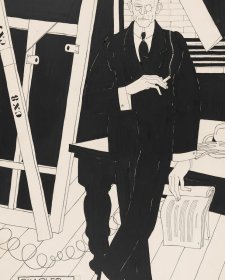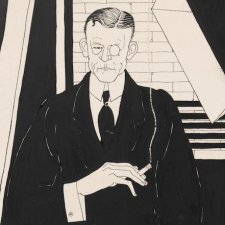Charles Haddon Chambers (1860–1921), playwright and dramatist, grew up in Sydney. Leaving school at thirteen, he worked as a clerk and then, for two years, as a boundary rider. At the age of twenty-two he settled permanently in London, where he began writing to support himself, contributing pieces to local magazines and writing London letters for the Bulletin. In 1888, Chambers’s reputation was established when his play Captain Swift was staged with Herbert Tree in the lead role. The play about a bushranger grabbed by ‘the long arm of coincidence’ was to be his only Australian-themed work apart from Thumb-nail sketches of Australian life (1891). For three decades he worked on twenty or so plays, which were staged in the West End and sometimes in New York; his outstanding successes included The fatal card (1894), The tyranny of tears (1899), Passers-by (1911) and The saving grace (1917). Handsome, graceful and a scintillating conversationalist, he was courted by society hostesses and prominent in club life. Although he was amicably married, between 1896 and 1904 he was Nellie Melba’s lover. His second wife, actress Pepita Bobadilla, later married Sidney Reilly, ‘Ace of Spies’.
Ralph Barton (1891–1931) New Yorker and Vanity Fair cartoonist, drew some of the defining images of American high life of the 1920s, including the illustrations for the novel Gentlemen Prefer Blondes and its successor, But Gentlemen Marry Brunettes. His portrait subjects included Charlie Chaplin, Ernest Hemingway, Sigmund Freud and Lillian Gish. Cursed with depression, Barton suicided in his Manhattan penthouse at thirty-nine.
Collection: National Portrait Gallery
Purchased 2010



On one level The Companion talks about the most famous and frontline Australians, but on another it tells us about ourselves.



Charles Haddon Chambers the Australian-born playboy playwright settled permanently in London in 1880 but never lost his Australian stance when satirising the English.



Spanning the 1880s to the 1930s, this collection display celebrates the innovations in art – and life – introduced by the generation of Australians who travelled to London and Paris for experience and inspiration in the decades either side of 1900.